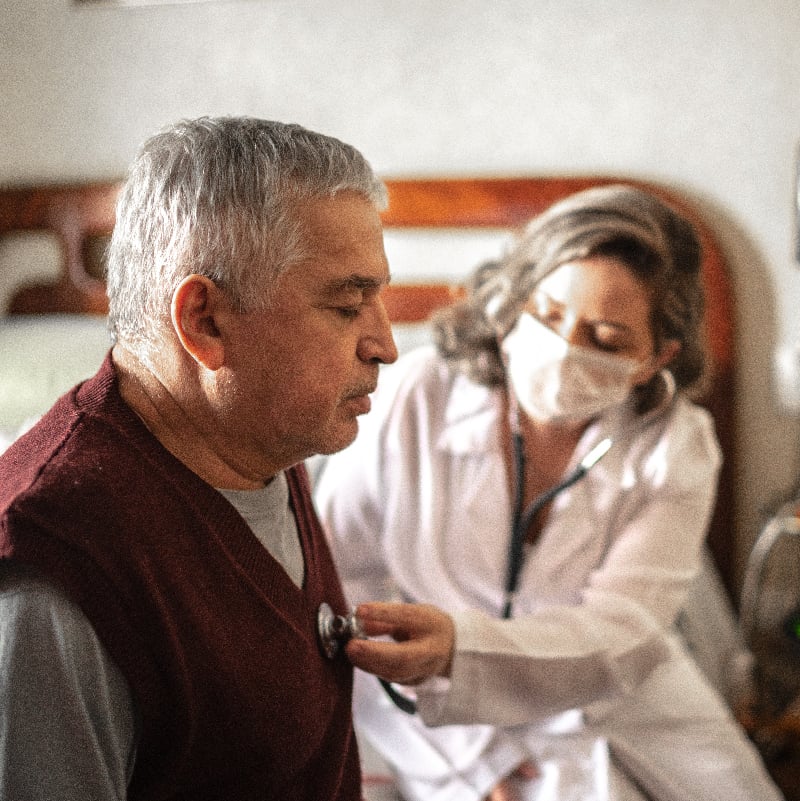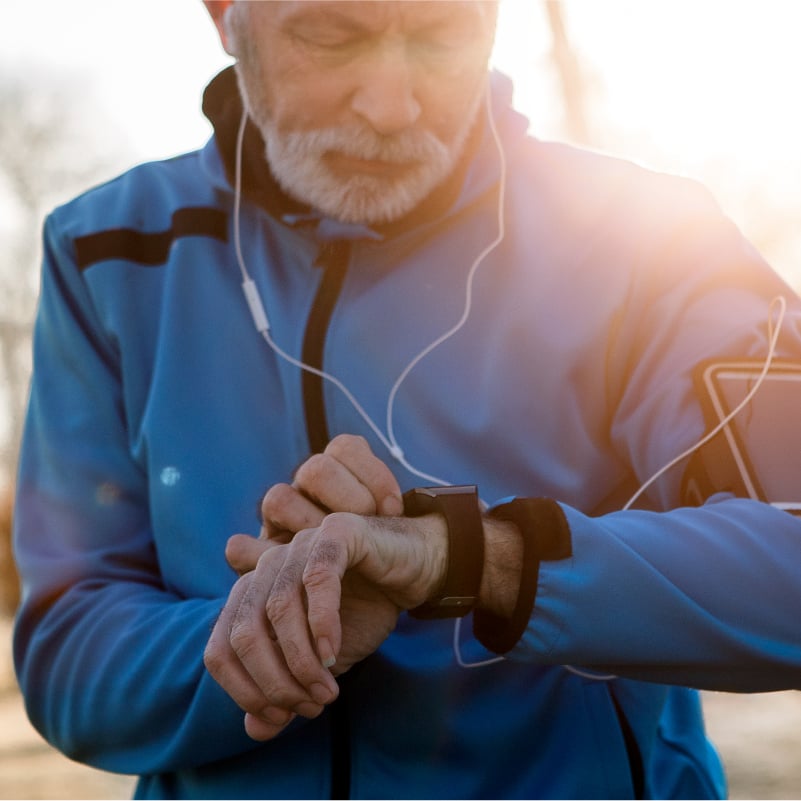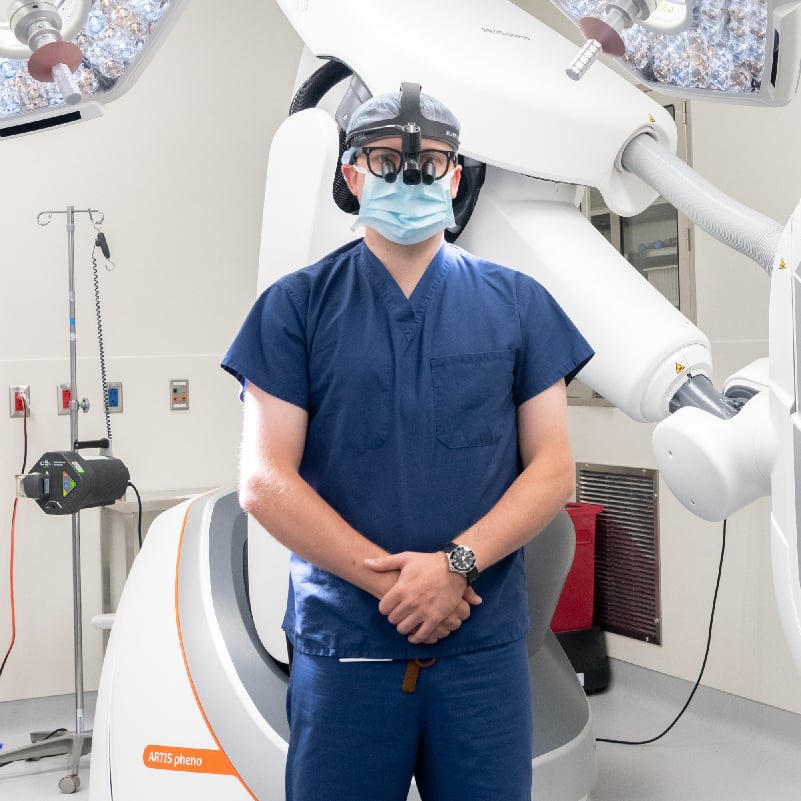Farming is some of the hardest work that a person can choose to do. Few people know that better than Kenneth Albano.
Kenneth runs his farm in a small town in Western New York called Bennington, located just a few miles outside of Attica. Like his father did before him, he harvests hay – between 700 and 800 bales a year. Cows, pigs, turkeys, and other animals are under his care as well. It keeps him busy year-round – to say the least.
Running a farm isn’t the only thing Kenneth and his father have in common. They also share similar risks with their heart health.
Like father, like son
Over the years, Kenneth’s dad developed coronary artery disease – the buildup of cholesterol, fat, and plaque on the arteries that supply blood to the heart. He died when he was just 59.
Before his father’s death, Kenneth said he never thought twice about the health of his own heart.
“Everyone told me I had a strong sounding heart and I never thought otherwise,” Kenneth said.
After his dad’s death, Kenneth started to notice some things about his overall health. While walking from the barn back to his house, he would become winded and fatigued. After deciding to see a cardiologist, the doctor did a few tests and suggested Kenneth might be showing signs of atrial fibrillation, or Afib – a common irregular heart rhythm that happens in the top chambers of the heart. Afib can cause blood to pool in the atria, increasing the likelihood of clots forming in a sac in the heart called the left atrial appendage (LAA) – which makes the possibility of suffering a stroke 3-4 times more likely compared to someone without Afib.
The older someone gets, the more likely they are to develop Afib. Other risk factors include heart failure, high blood pressure, sleep apnea, obesity, and valve disease. While the majority of Afib patients don’t have any symptoms, some will experience the feeling of a racing heart or palpitations, shortness of breath, and increased fatigue. Kenneth checked all of these boxes.
Following the appointment, Kenneth’s cardiologist sent him home with a heart monitor to record his heart’s rhythm. After confirming he had Afib, the doctor prescribed Kenneth with metoprolol, a medicine to control his heart rate, and blood thinners to reduce the likelihood of a stroke. But even with the medication, he was still feeling the effects of Afib.
“I started sweating a lot more, even while I was just sitting down,” Kenneth said. “I was at the hospital for a heart appointment and sweating a lot. The nurse ran some tests and told me I was going in and out of Afib there at the visit.”
The WATCHMAN program
Because patients with Afib commonly suffer heart failure and stroke, some – like Kenneth – start taking blood thinners. If these patients have a history of bleeding, or are at higher risk for a major bleeding event due to lifestyle or occupational hazards, they may be candidates for a WATCHMAN procedure.
A Watchman device is a small device placed inside of the LAA, effectively sealing it off and allowing it heal while preventing blood clots from forming. When the device heals into place (typically 45 days), patients can continue their blood thinner. Research shows that WATCHMAN reduces the risk of stroke the same amount as a blood thinner.
“Rochester Regional Health is both a pioneer and national leader with the WATCHMAN program,” said Jeremiah Depta, MD, an interventional cardiologist with Rochester Regional Health. “Using specialized CT scans, we create a 3D map of each patient’s heart so physicians know exactly what their LAA looks like and determine which device is best for the patient. Patients can return home on the same day when the procedure was performed, allowing for a more comfortable recovery.”
Most insurance providers cover the procedure for patients with valid clinical reasons, including increased risk for a bleeding event, or being assessed at a high risk for daily living or occupational hazard.
Back to life on the farm
After talking with his primary care provider and cardiologist, Kenneth’s risk was determined to be enough to have him move ahead with the WATCHMAN procedure.
Before the procedure, Kenneth said the nurses and procedural staff were very helpful in explaining how everything worked with the pre-operative preparation, procedure, and recovery process.
From start to finish, Kenneth was in the operating room for about one hour under general anesthesia. Implanting the WATCHMAN device takes 20-30 minutes and approximately 90 percent of patients go home on the same day the procedure is performed.
With no apparent side effects and no complications nearly a year later, Kenneth said he often forgets that the device is even in his body and is thrilled he does not have to be on a blood thinner any more.
“It made me feel better,” Kenneth said. “There was really no pain. I’d recommend it. My dad might still be alive if they had some of the procedures back then that they had now.”









